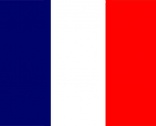Home › magazine › european reports › Town cleanliness label new in France
Town cleanliness label new in France
29th of July 2016News of a new municipal scheme recognising cleanliness, from ECJ reporter Christian Bouzols.
The municipality of Saint-Germain-en-Laye near Paris was one of the first to be awarded the Top Star of the new Éco-propre label rewarding those French cities are committed to achieving lasting improvements in the cleanliness of their public spaces.
Is Saint-Germain-en-Laye a clean town? According to the association of towns for urban cleanliness, this does indeed seem to be the case, along with 35 other municipalities.
As explained by the AVPU, the notion of “lasting” improvements implies that the label aims at recognising the means that have been deployed to reduce dirt (involving equipment, awareness raising, mediation, coercion, etc) rather than the means used for cleaning public spaces, “even though cleaning remains at the heart of the service”.
In addition to traditional human and visible methods deployed along its streets, the municipality has been developing various approaches to make its citizens more aware of the requirements of cleanliness.
So since 2007 it been using the services of the Vert de Ville association to implement preventative and information policies towards dog owners. Members of this association regularly approach dog owner to emphasise the importance of respecting the areas in which they walk heir dogs. By acting in this way, they enhance the expectations of the locals in respect of cleanliness.
Making use of new technologies, the municipality has also developed, in conjunction with a specialist startup, a smartphone app aiming at influencing the young. This app is a ‘serious game’ about cleanliness which aims to prompt the right reactions about environmental protection and the sorting of waste.
Some years ago, the municipality came to public notice by becoming the second French commune to put smart dustbins to the test. These dustbins are smart not only because they send out an SMS message when they’re full, but also because they have an electric motor which comes into operation when the waste has reached a given level, measured by a laser sensor, to compact the contents of the bin. This operation can be carried out automatically up to five times a day. Thus with an initial volume of 120 litres of waste, they can contain up to 600 litres of waste.
Saint-Germain-en-Laye cooperates closely with the AVPU, which it joined in 2011. This has led to the use of Property Goal Indicators to derive a “quantitative assessment of non-cleanliness”.
Council officials regularly inspect a sample of a dozen streets, taking note of their observations concerning various types of litter: papers, packaging, glass, cigarette stubs, dog faeces, chewing-gum, fly tipping, etc.
“This also draws our attention either to those areas where things need to be improved, or to the specific kinds of waste on which we need to focus. In particular it enables us to base our communications campaigning on the results of our inspections.










